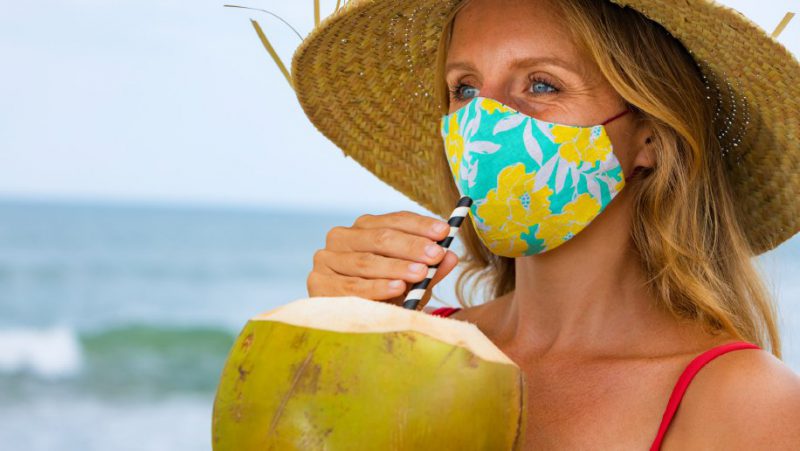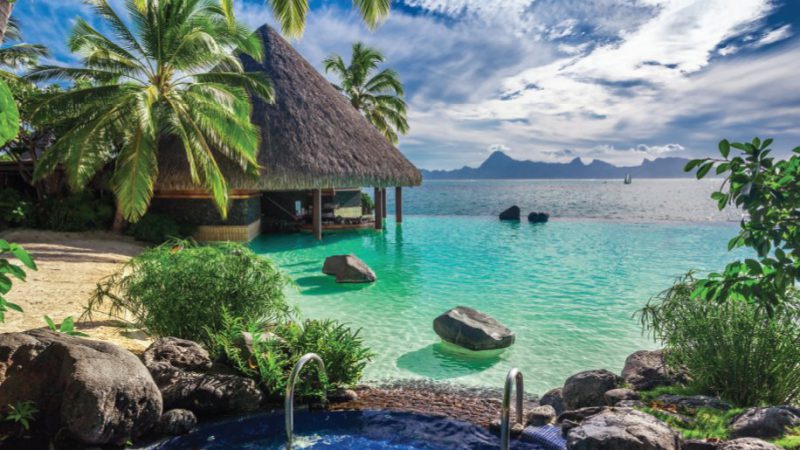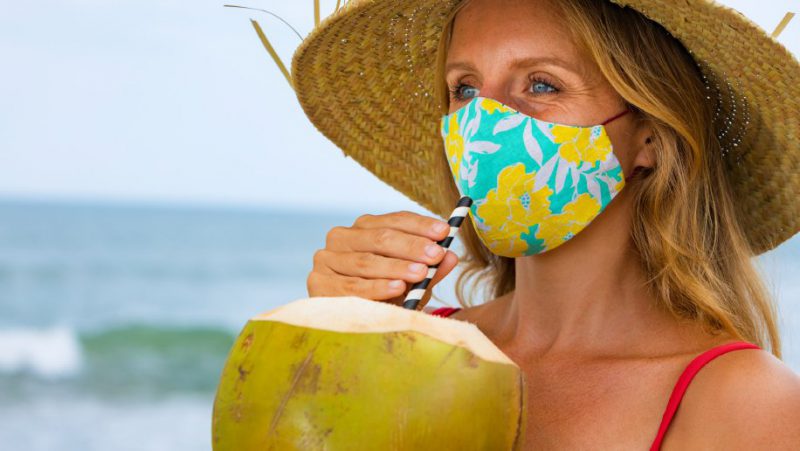Paradise Regained?
The Aloha State is caught in a COVID-19 limbo, somewhere between welcome and farewell
September 29, 2020


Vacationing in Hawaii has always been synonymous with relaxation, sandy beaches, tropical drinks and breathtaking sunsets. Then COVID-19 hit.
Initially, Hawaii had one of the lowest incidents of COVID-19 outbreaks for a US state.
Hawaii officials had hoped to reopen the state on Aug. 1 to visitors possessing proof of a recent and valid negative COVID-19 test, but pushed that reopening back to Sept. 1. However, after some continued spikes in COVID cases, Governor Dave Ige moved that date to Oct. 15 as the earliest Hawaii may reopen. Like many closings and openings over COVID, those dates remain moving targets.
The opening of Hawaii to mainland American visitors relies on a program that would allow those visitors to bypass Hawaii’s strict 14-day quarantine upon arrival by presenting a negative COVID-19 test at the airport.
“We will continue to monitor the conditions here in Hawaii as well as key markets on the mainland to determine the appropriate start date for the pre-travel (COVID-19) testing program,” Ige says. This latest extension means much of the year will be wiped out as few visitors want to be confined to their hotel or vacation rental for half a month.
Josh Green, the lieutenant governor and a practicing emergency room doctor, was worried earlier in the year, but now, “We’ve beefed up our contact tracing and testing capacity by orders of magnitude,” he says. “And a lot of our understanding about the virus has matured. We’re stronger, and we can definitely manage it.”
Ige says the state will announce a new date in advance so “that the hospitality industry would have the time they need to staff up” and support the new COVID-19 option for visitors.
Oahu is currently on lockdown with non-essential businesses closed. The state also reinstituted a ban on social gatherings, inside and outside, and other restrictions on Oahu, home to Honolulu, Waikiki and the majority of the state’s coronavirus cases.
With the recent increase in cases on the islands, it is unknown if the state will reopen with only a requirement for a negative COVID-19 test once a date is set. So far, plans calls for a negative result from an FDA-approved test from a CLIA-certified laboratory taken within 72 hours of arrival in Honolulu. The state has said testing will not be done at the airport.
Hawaii Touchdown
Currently, once you arrive in Hawaii, masks are mandatory everywhere in public places. Travelers must stay in their hotel rooms or residence for two weeks after arriving in Hawaii to prevent the spread of the coronavirus. The way hotels and resorts are monitoring self-quarantine is by giving guests single-use key cards. This means you will be able to enter your room once, to unpack and settle in, but if you try to leave your room you will be unable to reenter. Food and other needs would be delivered to you.
If you break quarantine, hotels are encouraged to report you. Consequences of breaking quarantine are steep – an arrest with jail time plus a fine of up to $5,000. Some folks who get arrested find a way to get a plane ticket for a speedy exit.
If you do manage to find a flight to Hawaii, during current quarantine regulations you are prohibited from renting a car per Governor Ige’s seventh supplemental proclamation. Taxi or Uber are your transportation options.
The State of Hawaii has initiated a new online Safe Travels application, available at travel.hawaii.gov, that is mandatory for all travelers as of Sept. 1. This new digital application, which collects the required health and travel information, is critical to protecting the health of residents and visitors alike.
Quarantine Blues
Safe Travels is one part of a multi-layered screening process which includes arrival temperature checks, and secondary screening for those with symptoms or temperatures of 100.4 degrees Fahrenheit or higher. Travelers are encouraged to enter their information and trip details well in advance of their flight.
Once their health information is entered, within 24 hours of departure travelers will receive a QR code via e-mail. The QR code on their mobile device or printed on paper gets scanned by the airport screener upon arrival. More information on the process can be found on the Hawaii.gov Internet portal. When all the information is verified the passengers are required to initial and sign the Order of Self Quarantine pdf acknowledging they are aware of the traveler quarantine measures.
Quarantine tracking is serious business. Those entering the state or traveling interisland are screened at the airport and their information is confirmed. Visitors and residents will receive calls from the State of Hawaii COVID-19 Quarantine Enforcement Task Force. Calls from this task force will appear as the phone number (808) 468-9952. Responses to these calls are tracked until the end of the visitor’s quarantine period.

In trying to salvage tourism on the islands, Gov. Ige authorized the state’s counties to develop agreements with hotels that would allow travelers from out of state to move around resort properties during their 14-day traveler quarantine. This is being referred to as the “resort bubble concept.” But until then, Kauai Mayor Derek Kawakami said he’s working on a plan would have visitors wear a tracking band that would alert security if they tried to exit resort grounds or remove the device. The area open traveler roaming would likely include beaches attached to resort hotels. Naturally, concerns skew to whether vacationers would want to wear a device that makes them feel like they’re under house arrest.
“We are trying to mitigate risk,” Kawakami told reporters during a news conference with the governor. Maui and Hawaii counties have also indicated they are exploring similar ideas for resorts.
Open Question
Under the current stay at home rules coastal beaches and state parks are closed as are most public venues. Restaurants are on a case by case basis, take-out or delivery only.
Given the recent spikes in cases, masks and other cleanliness protocol are necessary everywhere. At the time of this writing, many hotels, including Hilton brands and the famed Halekulani, are closed – the latter using these uncertain times to make sweeping upgrades throughout the property. Some hotels and resorts remain open but are operating at a 20 percent capacity.
Overall, occupancy numbers are in single digits. Aqua-Aston Hospitality properties remained open to essential workers including those from the National Guard, utility companies, cable companies, first responders, and road and rail workers. They continue to accommodate Kamaaina, essential travelers, military and condo unit owners.
Aqua-Aston is featuring a “Next Level Clean” program implementing CDC and government guidelines on health and hygiene standards, making sure that high touch surfaces like elevator buttons and front desk counters are cleaned regularly and allowing a minimum of 24-hours for guest room cleaning between check-in’s.
“There’s now a clean champion at each hotel overseeing the utmost of hygienic standards,” says Theresa van Greunen, Assistant Vice President, Corporate Communications at Aqua-Aston Hospitality.
As of press time, Hawaii’s industry is still awaiting further word from the government. Tourism accounts for 21 percent of the Aloha State’s economy. Last year, Hawaii’s 60th anniversary of statehood, the destination saw 10,424,995 visitor arrivals who spent some $17.75 billion during their time there. Currently, numbers are down around 90 percent from last year’s tallies at the more than halfway mark in 2020.
“Will the state even be open [for Christmas]?” asks Marc Bromley, general manager of Four Seasons Maui in Wailea. “That’s the million-dollar question.”
No one seems to know when tourism will return. Everyone is in wait and see mode. Meanwhile, in spite of uncertainty and under capacity, many hotel websites are offering 15-20 percent discounts on upcoming visits and advanced purchases. They are touting flexible cancellation policies that allow you to book now, pay now, and cancel up to 24 hours before your arrival.
In spite of pandemic uncertainties, hotels are trying to give travelers something to look forward to as the great adjustment continues. And everyone is hoping the step in that adjustment comes sooner rather than later.




